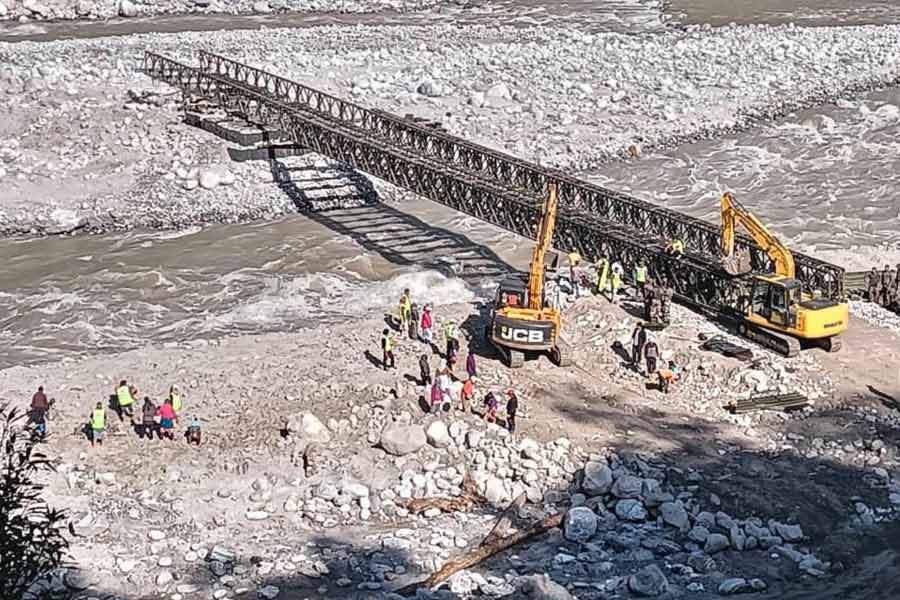In a month filled with news and images of searing heatwaves, wildfires, storm surges, cyclones and, nearer home, of the terrifying spectre of endemic drought and the ‘water apocalypse’ in Chennai, At Nature’s Edge comes as a sombre reminder of the fact that alarmist responses are seldom productive. Our media pushes us to react instantly and come up with immediate solutions to climate catastrophes, but this collection of essays by environmental historians, ecologists and conservationists warns us of the hazards of “short-termism” in our thinking about the environment. It also compels us to rethink the theoretical frames we’ve deployed to make sense of climate change on the one hand and conservation practices on the other.
At the heart of the book is a call for conversations between the ‘Environmental Sciences’ and the ‘Environmental Humanities’. Although this is not spelt out in the clearest of terms, the introduction to this book and the subsequent chapters present us with a series of researched papers that reflect on the compelling need to historicise the theoretical frames through which environmentalists and conservationists have studied the consequences of human impacts on our environment. The argument begins with a critical take on terms like the Anthropocene — first popularized by Paul Crutzen, the Nobel Prize-winning Dutch ‘atmospheric chemist’, to identify the origins of the geological age in which the human imprint on ecological systems was most visible. It is generally believed to have begun in the late 18th century, corresponding with the first appearance of carbon dioxide and methane in trapped air from polar ice cores. This era coincided with the invention of the steam engine in 1784 and the industrial revolution that took off in its wake. By the mid-20th century, this early fossil fuel-driven human impact on the environment entered the age of the Great Acceleration. By the mid 1990s, environmental science, climate science and conservation discourse converged around the consensual view of our common planetary history and future.
The authors in this book, while conceding the relevance of a broad planetary view of our common human futures, develop a robust argument against the uncritical deployment of either the theoretical or the empirical claims of narratives on the origin and the linear progression of the age of the Anthropocene. Human impacts on the environment are not episodic, these are processual, contingent and multi-causal. Clear starting points or periods of ‘great acceleration’ are neither universal nor unidirectional. What happened in Europe, in other words, cannot be taken to be a starting point for the rest of the world where patterns of livelihood, politico-economic structures, cultural and social contexts have mediated human impacts on the environment in vastly different ways. The editors, Gunnel Cederlöf and Mahesh Rangarajan, argue that a critical stance towards “universal” narratives of the Anthropecene and the attempt to “provincialize” it, or to unpack the Eurocentric assumptions embedded in it, is not only vital to our understanding of the diversity of our human pasts, but also to imagine futures that factor in both our perennial conflicts as well as our occasional peace-making gestures with nature.
The inclination in the Environmental Sciences to either uncover universal patterns and laws or to model and simulate futures often fails to capture the specificities of human-nature relationships in diverse ecological and politico-economic systems. To explore these complexities the editors of the volume have brought together authors with an interesting array of disciplinary strengths in history, anthropology, archaeology, political science, public policy and human geography. The result is simply staggering, both in terms of range and depth of scholarship and in overall polemical heft.
The project of de-centering or “provincializing the Anthropocene” is wonderfully achieved through the vast and diverse geographic spaces covered in the book. From the foothills of the Himalayas to the depths of the Indian Ocean, from the disfigured militarized landscapes of Vietnam to the high urbanized spaces of Bangalore, from the Namib desert to the settler colonial territories of Israel, each essay in this volume illuminates the complex textures of human presence in diverse ecologies and the ways in which impact stories on the environment often go against the grain of current orthodoxies. There is a sustained critical stance that questions both the hegemony of “declensionist” narratives of environmental history and science and the quick assumptions that drive dominant narratives of conservation. This is not to suggest that the authors are not concerned with issues of human exploitation and degradation of nature or that they are not appreciative of the noble goals of conservation. All that they are arguing is for historical depth, complexity and nuance in understanding the specificities of human-nature relationships, both in their degrading and regenerative aspects.
The argument is clearly for a long-term perspective and a historical sensibility that demands interdisciplinary conversations and historical methods that go beyond the limiting imperatives of the archive. Oral history, material culture, ethnography, visual studies, folklore, myth, memories are all deployed by the authors to tell us stories we haven’t heard before. David Biggs’s compelling story of US military bases and the reshaping of the rich agricultural landscapes of Vietnam, Sandra Swart’s unpacking of the “Bushman myth” and the settler colonial narratives that drove the exploitation of the Khoi San people and the territory of Africa at large, Sunil Amrith’s sensitive evocation of the vulnerability of India’s coastal frontiers, Harini Nagendra’s telling of a unfamiliar story of wildlife embedded in the urban morphology of Bangalore and Rohan Arthur’s deep dive into the coral reef system of the Lakshadweep islands with an absolutely fascinating story about a conservation project gone wrong are only a small sample of the riches this book offers.
To the general reader, the scope and diversity of the book might seem a bit daunting, but the editors do a splendid job in bringing everything together in a deeply insightful introduction. The “environmental turn” in the human sciences, they say, “is long overdue” and this book marks “but a small step in that journey”.
At Nature’s Edge: The Global Present and Long-Term History; Edited by Gunnel Cederlöf and Mahesh Rangarajan, Oxford, Rs 1,195












